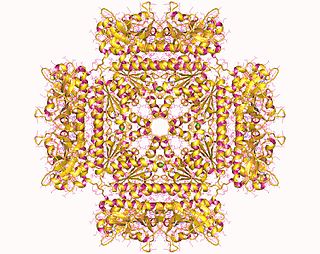| Identifiers | |||||||||
|---|---|---|---|---|---|---|---|---|---|
| EC no. | 5.4.2.10 | ||||||||
| Databases | |||||||||
| IntEnz | IntEnz view | ||||||||
| BRENDA | BRENDA entry | ||||||||
| ExPASy | NiceZyme view | ||||||||
| KEGG | KEGG entry | ||||||||
| MetaCyc | metabolic pathway | ||||||||
| PRIAM | profile | ||||||||
| PDB structures | RCSB PDB PDBe PDBsum | ||||||||
| Gene Ontology | AmiGO / QuickGO | ||||||||
| |||||||||
In enzymology, a phosphoglucosamine mutase (EC 5.4.2.10) is an enzyme that catalyzes the chemical reaction
- alpha-D-glucosamine 1-phosphate D-glucosamine 6-phosphate
Hence, this enzyme has one substrate, alpha-D-glucosamine 1-phosphate, and one product, D-glucosamine 6-phosphate.
This enzyme belongs to the family of isomerases, specifically the phosphotransferases (α-D-phosphohexomutases), which transfer phosphate groups within a molecule. The systematic name of this enzyme class is alpha-D-glucosamine 1,6-phosphomutase. This enzyme participates in aminosugars metabolism.
Crystal structures of two bacterial phosphoglucosamine mutases are known (PDB entries 3I3W and 3PDK), from Francisella tularensis and Bacillus anthracis . Both share a similar dimeric quaternary structure, as well as conserved features of the active site, as found their enzyme superfamily, the α-D-phosphohexomutases.









